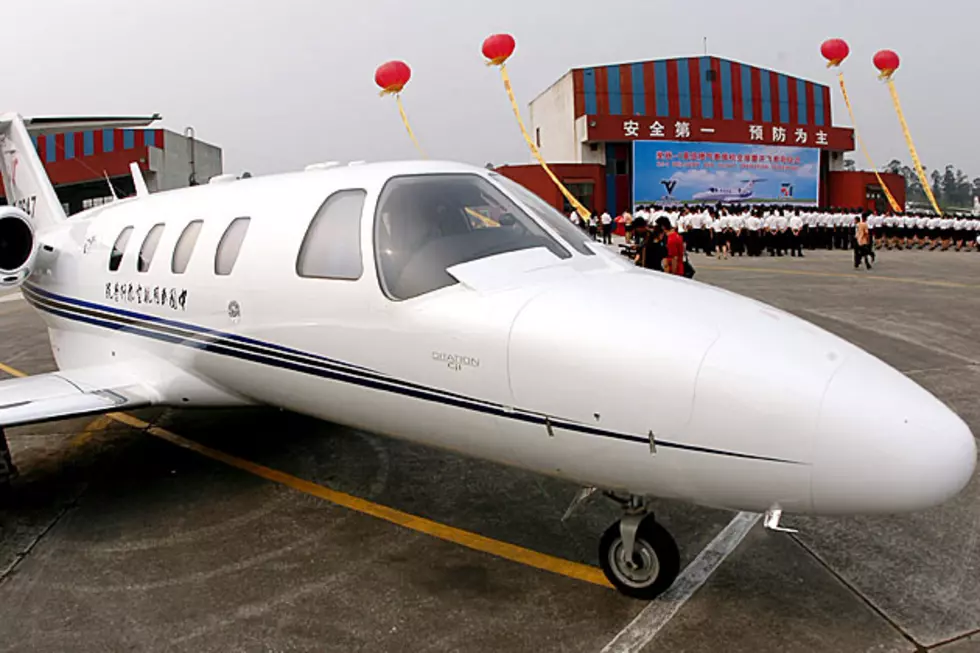
10 Interesting Airplane Travel Myths
I am not planning any airplane travel this summer however we always hear lots of horror stories about traveling via the friendly skies. A coworker of mine was just stranded for 5 1/2 hours on the runway in two different planes, I totally would have killed myself (JK). Here are the 10 urban legends about air travel that just are not true!
1. Airlines Dump Waste In-Flight. Aircraft waste is stored in a holding tank until landing. It is not possible for airplane crew to dump waste in-flight due to the mechanics of the system.
2. Personal Electronics Make Planes Crash. There's no real evidence that electronics pose a safety hazard during flight - pilots are even allowed to bring iPads into the cockpit.
3. Recirculated Air Makes You Sick. It's not the recirculated air that's making you ill. The air inside the cabin is pressurized fresh air that has been filtered to remove more than 99 percent of bacteria and viruses. The more likely culprit for that virus you caught on vacation is something you touched onboard the plane - tray tables, blankets, and bathrooms are germ hotbeds.
4. Airplane Food Tastes Bad. According to a study conducted by University of Manchester researchers, it could be the loud noise from the plane's engines that makes flyers think their in-flight meals taste bad. The study found that background noise (which is constant on airplanes) can distract eaters and change their perceptions of how the food tastes.
5. You Can Open the Aircraft Doors In-Flight. It is physically impossible for a person to pry open an airplane door when the cabin is pressurized, because the difference in air pressure is too great.
6. Brace-Position Conspiracies. It is not true that the crash position is encouraged only to preserve passengers' teeth (thereby making body identification easier). Another theory is that the position is designed to break flyers' necks and kill them quickly, because it is cheaper for an airline to pay for a wrongful death settlement than injury compensation. In fact, studies of airline crashes have shown that the brace position, when done correctly, saves lives. By placing your head on the seat in front of you, you will significantly reduce the risk of head trauma in a crash.
7. Autopilot (Not Pilots) Fly Planes These Days. Autopilot is rarely (* rarely???) used during takeoff and landing. It's primarily used when the plane is cruising. Even then, the pilot keeps a close eye on it and makes adjustments as needed.
8. You Can Get Stuck to the Airplane Toilet. The person sitting would have to create an airtight seal around the toilet (not likely), and even if that did happen, as soon as the toilet stopped flushing, the seal would be broken.
9. You Get Drunk More Quickly on a Plane. Studies have shown that drinkers' blood-alcohol levels aren't higher in the air than on the ground. However, both alcohol and air travel can dehydrate you, so your hangover may be worse after a few drinks in the sky than a few at the bar.
10. The Oxygen in Masks Gets You High. Oxygen won't get you high - no matter what "oxygen bars" or movies try to tell you.
More From 98.3 KEYW


![Does “Dry Heat” Really Exist In The Tri-Cities? [POLL]](http://townsquare.media/site/133/files/2021/06/attachment-207166346_10225328951593022_279480266115497248_n.jpg?w=980&q=75)

![Windowless Airplane of the Future [VIDEO]](http://townsquare.media/site/133/files/2014/11/Windowless_Plane.png?w=980&q=75)


![Watch Terrifying News About Cell Phones on Aircraft! Everyone Should See This! [VIDEO]](http://townsquare.media/site/133/files/2013/03/hqdefault.jpg?w=980&q=75)

